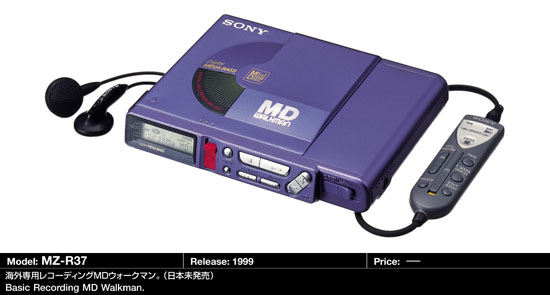Disclaimer: A local MD collector lent me two MZ-RH1s in order that I could publish my opinions here, at YouTube, and also for a hi-res photo of the above. Many thanks, Rok.
Relevant links:
RMAA: SONY MZ-NH3D 16-BIT
RMAA: Sony MZ-B100 16-bit
RMAA: Panasonic SJ-MJ500 16-bit
RMAA: Kenwood DMC-S55 16-bit
RMAA: SHARP MD-DS8/9 16-BIT
RMAA: Sony MZ-E55 16-bit
Minidisc VLOG - 03: Hiss ranking
Minidisk VLOG - 02: Sharp MD-DS8/9
Minidisk VLOG - 01: Elegant lies
The MZ-RH1 was Sony’s last full-fledged Minidisk recorder/downloader. It could connect to digital sources via TOSLINK or USB, the latter requiring 32-bit Windows and a USB B cable, the former playing nice with nearly any optical-capable source. It downloaded. It recorded. It played.
Some say it rocked.
And, by and large, it still does. No other MD recorder had as many built-in features. No other recorder with a realtime recording feature set measured as well. But the RH1 isn’t as solidly built as the MZ-NH3D, the MZ-R50, or the MZ-B100. While the RH1 hisses drastically less than the R50 and somewhat less than the NH3D, it can’t regulate a loaded signal as well as either. Its stereo image collapses and its frequency response drops off. Still, its sound enhancement engine is good, featuring a well-rounded EQ, dynamic normaliser, and environment-induced echo emulator.
Unfortunately, like all modern Minidisk players, it is less powerful than an iPhone and unable to come close to the 16-bit ceiling. In MD land, it is one of the best-performing units. In the greater world, it is far, far behind even mid-range and entry-level players like the Fiio M6, FiiO M3, the Onkyo DP-S1, and Cowon Plenue D.
Its buttons are hard to press, in awkward locations, and tiny. The few buttons that are large, are loose, too easily engaged, and weak. The battery compartment stays shut reasonably well, but is hard to both open and close, and isn’t as tightly battened down as the NH3D’s.
It bears a striking family resemblance to Sony’s prettiest recorder, the MZ-R37. It isn’t brutish or awkward. It’s OLED screen is easily readable in any indoor light, and nearly impossible to read in direct sunlight.
If you’re int the market for a recorder, the MZ-RH1 is unmatched in features and overall recording performance. The list of qualifying provisos to that praise is equally impressive.
By percentages, unloaded deviation from RED BOOK 16-bit targets are as follows:
FR: +2,90dB; -0,98dB
Noise level: ~99,7%
Dynamic range dB (A): ~99,8%
THD, %: ~32x over target
IMD + Noise, %: ~12x over target
Stereo crosstalk, dB: ~70%
Source: Sony MZ-RH1 MD Recorder/Downloader
ADC: Lynx Studio HILO LT-TB
Computer: 2012 27" iMac
Cables: 1,5m Hosa Pro 3,5mm stereo to dual 3-pin XLR (around 8$); bespoke y-split 2,5 TRRS to dual 3-pin XLR made by Musashi Sound Technology.
Loads:
NL - no load
SM2 - Earsonics SM2
ES7 - Audio Technica ES7
DT880 - Beyerdynamic DT880/600
16-bit VOL (Full) @+0dB - all targets
16-bit VOL (Full) @+0dB - NL summary
End words
The RH1 is chock-full of features. It looks good, plays well, and is crafted partly for the future, partly for the past. But it’s not that solidly built, nor does it measure as well as certain other MZ MD Walkmans. It sounds good, and only barely hisses when hooked up to modern, super-sensitive earphones like Hidizs MS1 and MS4. But ultimate sound quality is not the reason you’d pick one up. You’d pick one up to own the last-gen Sony MD Walkman decoder, or to upload your favourite old MDs to your computer, digitally, and with all their titles and track marks in place.
All in all a good, but not great recorder.




